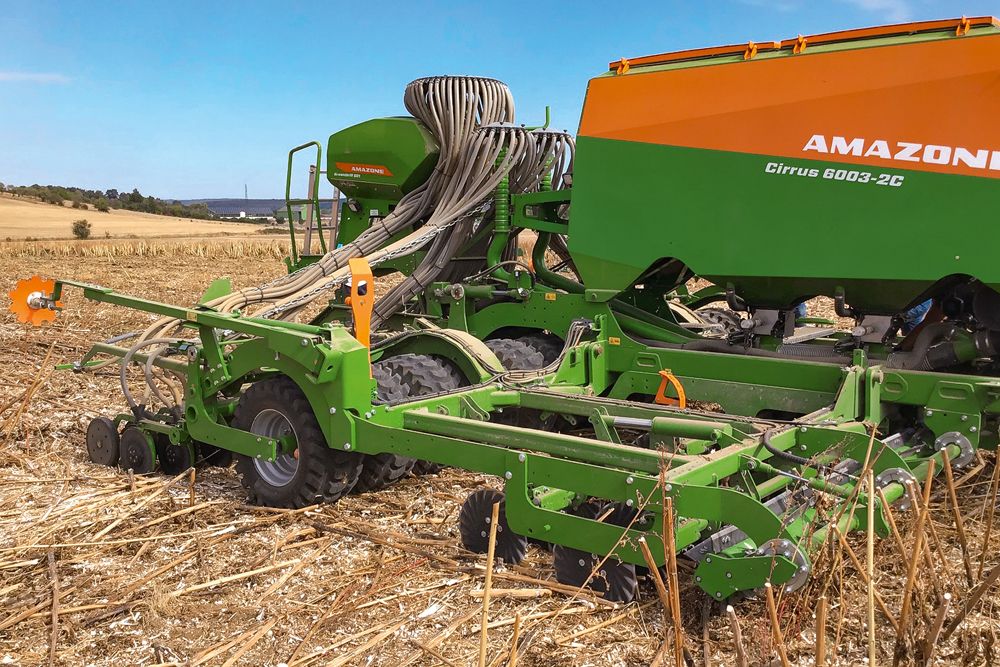Choosing the Right Seed Drill for No-Till Farming
A Guide to Successful Regenerative Agriculture
No-till farming is a key principle in conservation agriculture and regenerative farming, and choosing the right seeder plays a crucial role in establishing a successful crop. As the saying goes, “Well begun is half done,” and this holds particularly true when it comes to establishing a robust crop. Achieving a uniform, healthy, and dense crop sets the foundation for a successful harvest. But what should one consider when choosing a seeder for no-till farming? This article tells you everything you need to know to make an informed decision and choose the right seeder for direct seeding.
The Difference Between No-Till Seeders and Traditional Seeders
No-till seeders must be able to handle the residues of the previous season, making them more robust. They are designed to navigate and cut through large amounts of crop residues in the field. In comparison to traditional seeders, no-till seeders usually have greater spacing between teeth or discs to allow crop residues to pass through the machine without clogging. Additionally, the seeding blades are often more expensive per unit, resulting in fewer seeding units but a greater, albeit more economically spaced, row distance. Standard seeders typically have a row spacing of about 12.5-15 cm, while direct seeders range from 16.5-25 cm.
Another significant difference is that when the soil is not plowed and homogenized before seeding, the ground can be harder in some areas than others. Therefore, direct disc seeders need a higher cutting pressure to maintain a consistent seeding depth. A traditional seeder may struggle to work in non-homogenized soil, leading to uneven seeding depths and gaps in the crop.
Disk or Tine Seeder – Which Is Better?
The first major decision is whether to choose a disc or tine seeder. Both types have their advantages and disadvantages, but the choice ultimately depends on your farm.
Disc seeders are often more precise in seeding depth and can handle catch crops and large amounts of straw. However, they are generally more expensive to invest in, and adjusting the drill pressure requires more effort from the farmer. Moreover, disc seeders tend to create ‘hairpinning,’ where crop residues are pressed into the seed furrow, potentially disrupting seed contact with the soil. In wet clay soil, disc seeders can also cause side-wall-smearing of the seed furrow, leading to compaction that may negatively affect root development in the early weeks of crop germination.
Tine seeders, on the other hand, are usually cheaper and simpler. They do not cause hairpinning and have a lower risk of side-wall-smearing and compaction. However, they are typically less precise in seeding depth, potentially resulting in a less uniform establishment. They also cause more soil disturbance and have more difficulty with handling crop residues in the field.
Which One Should You Choose?
Agroganic has conducted numerous seeding demonstrations to answer this question. Our demonstrations show that, in most cases, tine seeders produce the best results, and due to their lower cost, they are the optimal choice. Especially for wet or clayey soil with low humus content, a tine seeder is the most suitable choice. If the soil is humus-rich and easy to work with, opting for a disc seeder may be a good decision. For very sandy soil, both types are a safe choice, and the decision can be based on personal preferences.
Can’t I Use the Seeder I Already Have?
Yes, you can—in some cases. If you are new to no-till and want to try out the cultivation system before investing in expensive seeders, you can use your regular Horsch Pronto or Väderstad Rapid for direct seeding. It does require a certain amount of patience, though.
Are you considering transitioning to no-till cultivation and need guidance on your investments? Contact Agroganic today to learn more about how we can help you and your agribusiness

